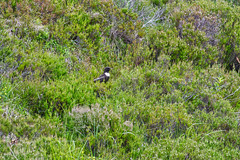The Bee Removal Process In Oceanside

Get More Information Here:
byAlma Abell
Bees are a vital part of nature. Like many animals, they have a mechanism to defend themselves if they feel their home is under attack. While this defense is useful for animal predators who love the honey, it is not so welcome when their hive is located in the backyard or inside your walls. Trying to get rid of them through traditional means such as poisonous sprays will really only aggravate them and bring out more of their defensive side. Thus, the only way to get rid of them, and potentially spare the hive, is to remove the honeycomb completely.
One of the first steps in bee removal in Oceanside is to dress up in bee protective gear. Since bees target the eyes and nose first, bee veils are absolutely necessary when working with bees. That is why you see many bee removal experts don this protective gear before the approach the hive. They will also ensure the rest of their clothing prevents angry bees from coming in contact with them. If the bees are very angry because of other removal efforts, they will attack regardless of their strain.
Another step is to use the smoking gun. The smoking gun helps as a means to calm down the bees. It simulates a fire, and bees will scurry to consume a lot of honey. This makes it tougher for them to actually sting a person. The smoke is used judiciously to calm the outside bees so the bee remover can get to the honeycomb the bees have built.
Getting to the honeycomb is the next step of bee removal in Oceanside . This may require the removal of drywall, framing and anything else the bees have built their honeycomb on. Getting rid of it completely is essential because bees will return if there is even a tiny bit of honeycomb left.
While not all strains of bees are aggressive, they can become that way if they aren’t properly removed. All bees will defend their homes, but it is important to save as many honey bees as possible because they are important pollinators. So many honey bees can find new homes with beekeepers and don’t have to be completely eradicated during removal.

